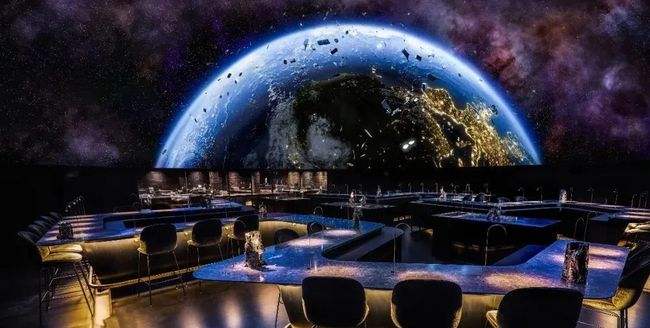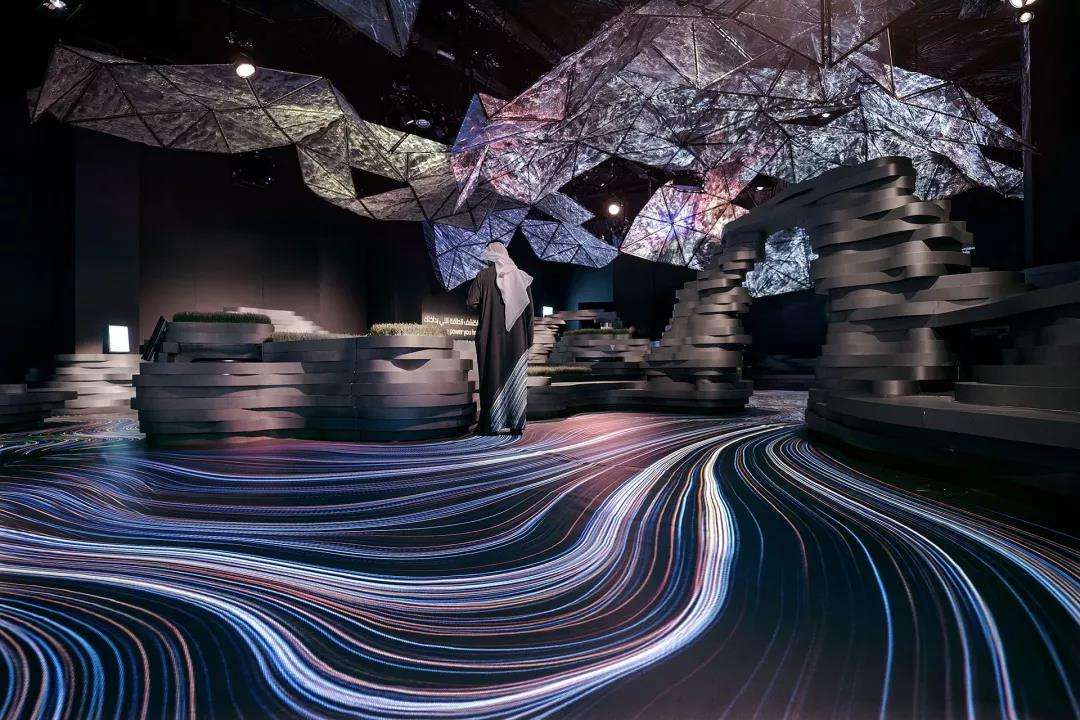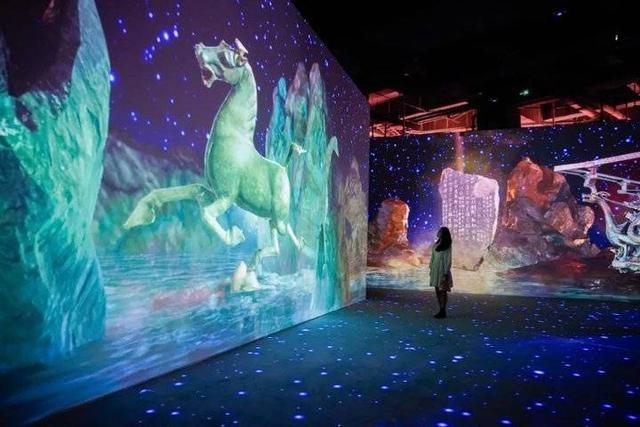Technology foundation for immersive experience
(1)Creating a digital "quasi-object"
Immersive experience is the result of the integration and innovation of contemporary culture and technology. Although human beings have long yearned for immersive experience, it can only be universally feasible on the basis of popularization and large-scale commercial application of information technology, digitalization and intelligent technology, flexible LED, and will gain a broader market space with the large-scale popularization and application of frontier technological achievements such as 5G technology. It combines basic theory, advanced technology, modern logic, cultural equipment, big data, etc., and has distinctive features such as virtualization, intelligence, systematization and interactivity. Relying on the existing level of development, immersion technology and products can be applied to many fields such as engineering, medical care, training, agriculture, rescue, logistics, and military. Moreover, immersive experiences bring unprecedented imagination, sense of wonder, passion and joy to people. As Nietzsche said, gamers "both want to see and desire to go beyond seeing" and "both want to listen and desire to go beyond listening. Immersive experience is in line with the human nature of play and entertainment, and it has been widely used in creative, media, art, entertainment, exhibition and other cultural industries.
According to the Innovate UK report, more than 1,000 UK immersive technology specialist companies were surveyed in 22 market segments. The number of companies involved in the media market has the largest share of all market segments, at 60%, while the number of companies involved in the training market, education market, gaming market, transparent LED, advertising market, travel market, construction market, and communication market ranked second, fourth, fifth, sixth, eighth, ninth, and nineteenth, together accounting for the majority of all market segments. . The report states that: almost 80% of immersive technology specialist companies are involved in the creative and digital content market; 2/3 of immersive technology specialist companies are involved in other markets, ranging from education and training to advanced manufacturing, creating diversified benefits across multiple market segments by providing immersive products or services. Notably, media, training, gaming, advertising, cultural programs in tourism, design in architecture, and digital content in communications are all part of the cultural and creative industries
It can be found through further research: immersive experience is widely used in the field of cultural and creative industries because the content it provides is very different from the natural scenery and the fantastic feeling brought by performing arts, festivals and religious activities. While the latter is created by nature or the artificiality of live performances, immersive experiences are characterized by digital objects such as digital texts, digital symbols, electronic audio and digital video. According to Chinese scholar Li Sanhu, digital objects are essentially systems of "metadata" expressed in a binary digital language, unlike material existence in the traditional sense. "Digital objects are different from natural objects and are technical artifacts, which can be called 'digital artifacts'. Their colorful expressions can be reduced to binary numerical expressions of 0 and 1. Such digital artifacts can enter the modular and hierarchical organization network and express themselves as digital objects such as information expression, storage, linkage, computation, and reproduction, thus evolving various properties such as movement, control, modification, interaction,
perception, and representation. Such digital artifacts are different from traditional technical artifacts (such as buildings, prints, paintings, handicrafts, etc.), and can be called "digital objects" to distinguish them from natural objects. This digital object is a symbolic immaterial form that can be experienced by people through visual, auditory and tactile senses by using digital as the carrier and formed through creative design.
Wang Xuehong, a well-known entrepreneur in the information technology industry, pointed out that "humanity is entering an incredible era", that is, the era of immersive content, which is based on "VR+AR+AI+5G+Blockchain = Vive Realty It uses "VR+AR+AI+5G+Blockchain = Vive Realty", i.e. virtual reality, augmented reality, artificial intelligence, 5G technology, blockchain, etc., to create countless kinds of vivid and dynamic relationships between people and the environment, subjective and objective, real and fantasy . The immersive experience in the cultural industry has a huge tolerance for emerging technologies. The mystery lies in the fact that immersive products and technologies are based on digital objects and can form an open-source interface to all kinds of digital technologies and products. Various new digital technologies and products have continuously enriched the immersive experience, thus making the dream symbolic world constituted by this digital object more and more strongly characterized by big spectacle, super shock, full experience and logical power.
With the development of 5G technology, Internet of Things, big data, artificial intelligence, etc., digital objects are gradually replacing human thinking activities. As bamboo and paper have become the bearers of human writing, the "metadata" of digital objects must rely on computers, communication devices, electronic displays, etc. to circulate and operate. "They are "quasi-objects" that are highly dependent on a specific material environment. In this sense, immersive experience is highly dependent on the development of digital carriers, technologies and equipment systems, and the richer the symbolic content expressed by digital symbols, the greater the value of digital carriers, technologies and equipment. It provides a symbolic immaterial world that can be infinitely extended, superimposed, changed and accessed to bring into play human imagination, creativity and expressiveness. This is the most essential and important feature of immersive experience from an ontological point of view.
(2) Integration of a large number of cutting-edge technological achievements
In the development of immersive experience, a large number of cutting-edge technological achievements are integrated, including 3D holographic projection technology, virtual reality (VR), augmented reality (AR), mixed reality (MR), multi-channel projection technology, laser projection display technology (LDT) and so on. These technologies are either "embedded" or "driven", profoundly influencing the structure and content of immersive experiences.
One of the key technologies: 3D holographic projection, which is a digital audio-visual means of recording, storing and reproducing three-dimensional images of the characteristics of real objects. By using the principles of interference and diffraction, it is projected onto the facade and space of various buildings, allowing the audience to see three-dimensional virtual characters with the naked eye alone. With the increasing maturity and perfection of holographic projection technology, it is more and more widely used in immersive experiences. With its realistic presentation and clear three-dimensional performance effect, holographic projection has become one of the core means of immersive experience. It helps to maximize the audience's visual, auditory and tactile senses, etc., so that they can fully concentrate on the pre-designed situation, which can greatly stimulate people's curiosity and imagination, and gain the feeling of entering alternative space and time.
The second key technology: VR/AR/MR technology. Virtual reality (VR), is a kind of audio-visual simulation system that can create and experience virtual worlds. It uses computers and artificial intelligence to generate a simulated environment, a multi-source information fusion, interactive three-dimensional dynamic visual and physical behavior of the simulation system ⑬. The artist uses VR technology to break the boundary between digital symbolic space and the physical world, relying on human-computer interaction, transforming imagination into virtual, and virtual into perceptible reality, realizing "reality in the virtual", "reality in the virtual", and "reality in the virtual". The wonderful unity of "reality in reality", "reality in reality" and "reality in reality", thus giving the work a colorful sense of immersion.
Augmented reality (AR) is a simulation of the original physical information in the real world, such as shape, material, color, intensity, etc., through 3D modeling, scene fusion, hybrid computing and other digital technologies, in which artificially added information, including data, shape, color, text, etc., is superimposed into the same space. This augmented virtual reality can be directly perceived by human senses to achieve a sensory experience that comes from reality and transcends reality, and AR brings the audience's experience into the three-dimensional era, which is more three-dimensional and realistic than flat two-dimensional and provides the audience with a strong sense of presence.
Mixed reality (MR), a further development of virtual reality technology, is a technology that mixes VR virtual scenes with a high degree of immersion and video images of the experience and outputs them. Mixed reality technology is a new visualization environment based on merging real and virtual worlds. It builds an interactive feedback loop between the real world, the virtual world and the user, allowing people to play the dual role of "watcher" and "watched" in the MR system. VR is a purely virtual digital image that enhances the realism of the user experience; AR is a virtual digital image combined with naked-eye reality that traverses through different spaces; and MR is a digital reality combined with a virtual digital image that projects virtual objects into real-world information systems and allows users to interact closely with virtual objects.

Key Technology No. 3: Multi-channel projection and laser projection display technology. Multi-channel projection technology refers to a multi-channel large screen display system using a combination of multiple projectors. With the development and popularity of 5G technology, multi-channel projection technology will provide ultra-high definition, low latency visual images. It has the advantages of larger display size, extremely low time delay, richer display content, and higher display resolution, as well as superb visual impact, creating a wonderful feeling that immerses the experiencer. It is one of the optimal choices for graphic image display and scene creation in spaces such as large-screen cinemas, science museums, exhibition displays, industrial design, education and training, and conference centers.
Post time: Jun-08-2022


